Busterminal skrev:Is there any place that man can buy that kind of key somewhere?
Of course you cannot buy those keys, in Swedish "Någon ordning får det väl ändå vara".

Please don´t ask questions like that here because it makes people suspicious.

In Sweden, no railway enthusiast should try to unlock those doors and I really hope you do not do similar things, here or somewhere else.
To maintain the goodwill of the railway entuthiast movement, no such obstructions should be tolerated. The climate between railway staff and enthusiasts in Sweden is very good, but doing such things can easily make it bad.
And now for your other question. I hope you enjoy these pictures, but please remember I have the ©.
Busterminal skrev:What kind signals in Stockholm subway have? Like main- and fore/distantsignals?
First, you should know that there are two partly different signalling principles in the Stockholm Underground. At the Green line (Gröna linjen) the signalling system is made for double-direction service on both tracks, while the Red and Blue lines are made for left-hand running only. For this reason, both the main signals and the cab signals differ a bit between the two systems.
However, there are only main signals in the Stockholm underground, but they look different at different locations. In tunnels and on the wrong track, they are usually smaller while outdoor signals usually look like any railway signal.
Five different aspects can be shown:
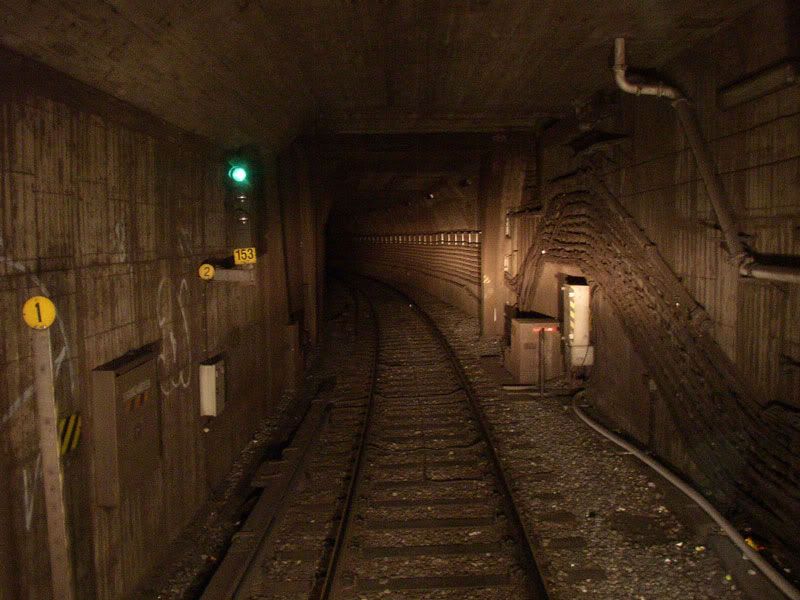
One green light: "Kör" (Proceed)
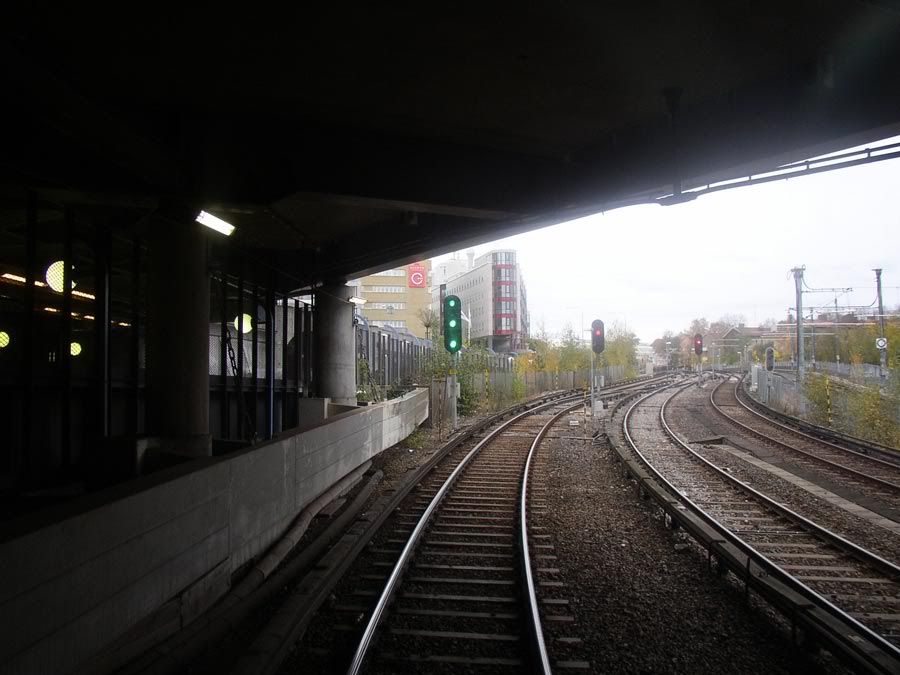
One, two or three green lights: "Kör" (The number of green lights shows which route the train will run behind the signal.)
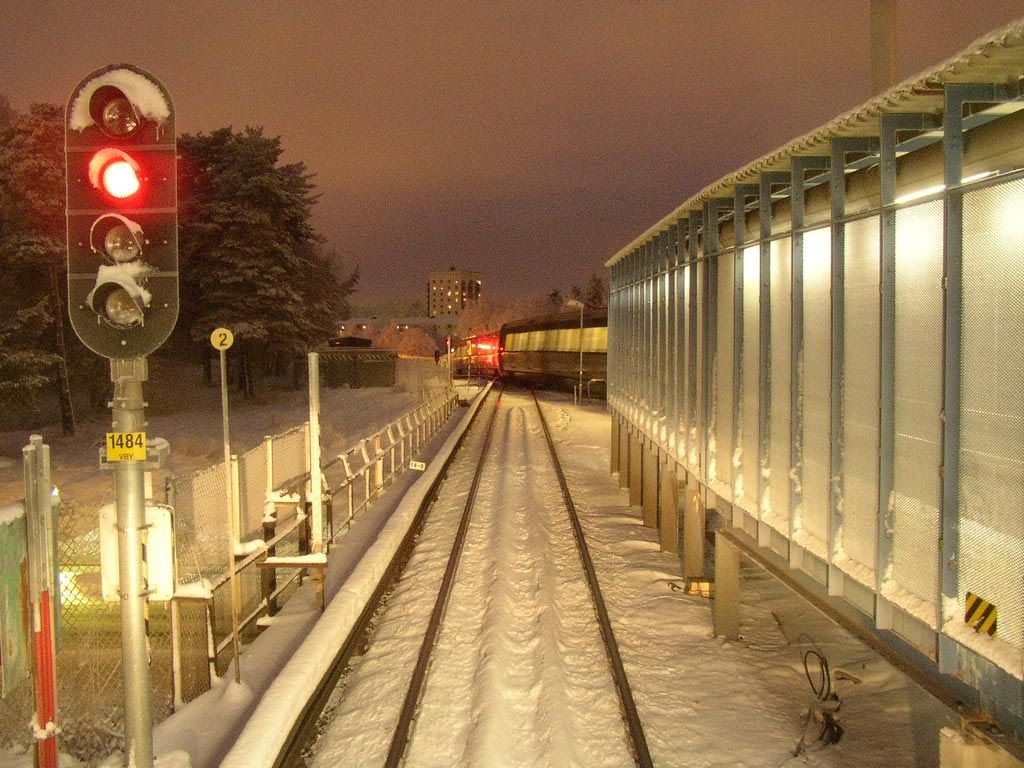
Red light: "Stopp"
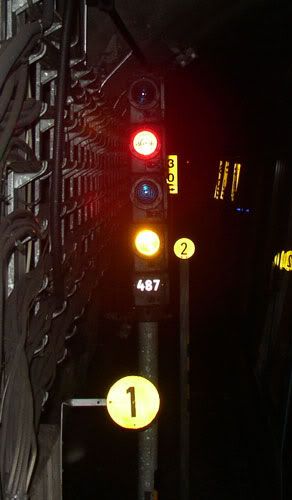
Red over yellow: "Stopp, därefter kör varsamt" (Stop and proceed at caution). The driver should expect a train or some other obstruction beyond the signal.
The main signals do not tell any speed limits, those are maintained by the cab signalling system "HS". For this reason, no preparating signal aspects are needed (although it might make the journey a lot more comfortable!). Furthermore, a train without HS may run at maximally 30 km/h (at some conditions 40 km/h).
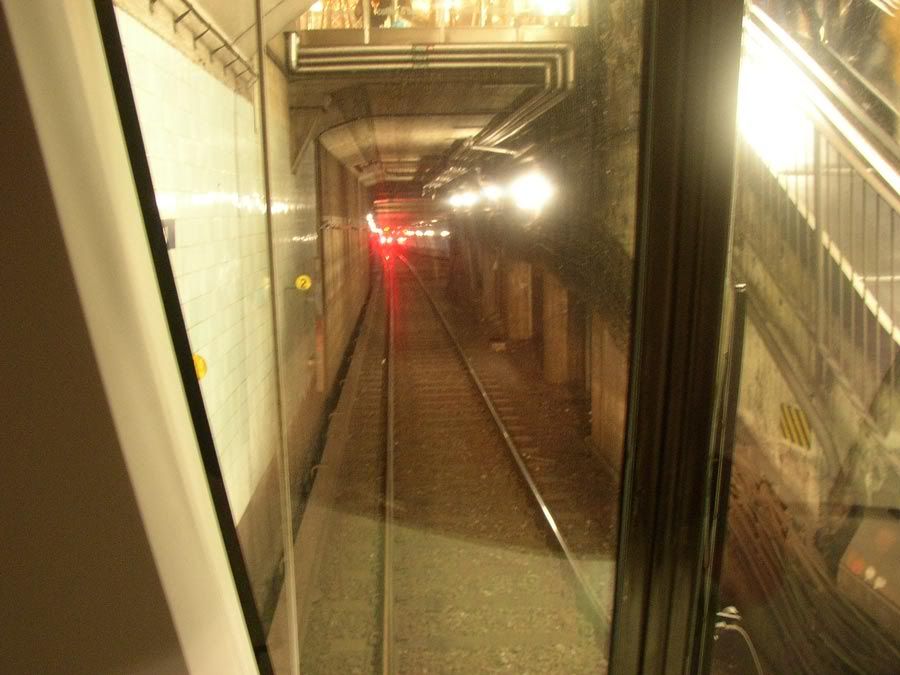
Here there is no main signal between the two trains. If there had been one, it might have shown a green aspect. Instead, the speed of the second train is automatically reduced by the cab signalling system, so that it should not rear-end the first.
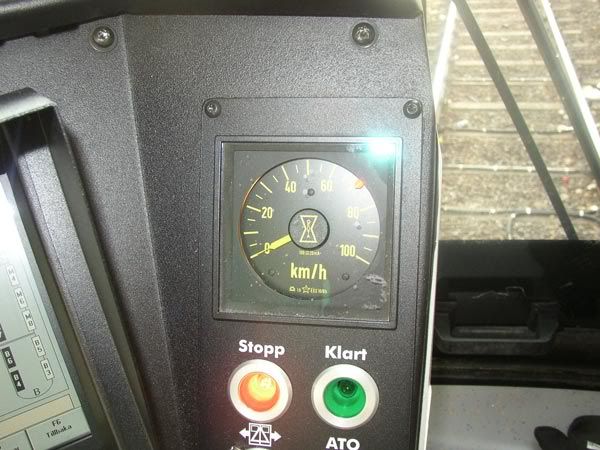
As you can se, the speedometer has two pointers. The speed limit here is 70 km/h - if the driver should attempt to overspeed, the service brake is fully applied until the speed is below 70. In case of any service brake failure, the emergency brake will bring the train to a complete stop before it can proceed. There are two different kinds of cab signals (this one is used at the Green lines). A lot could be told about the cab signalling but that´s not the issue here.
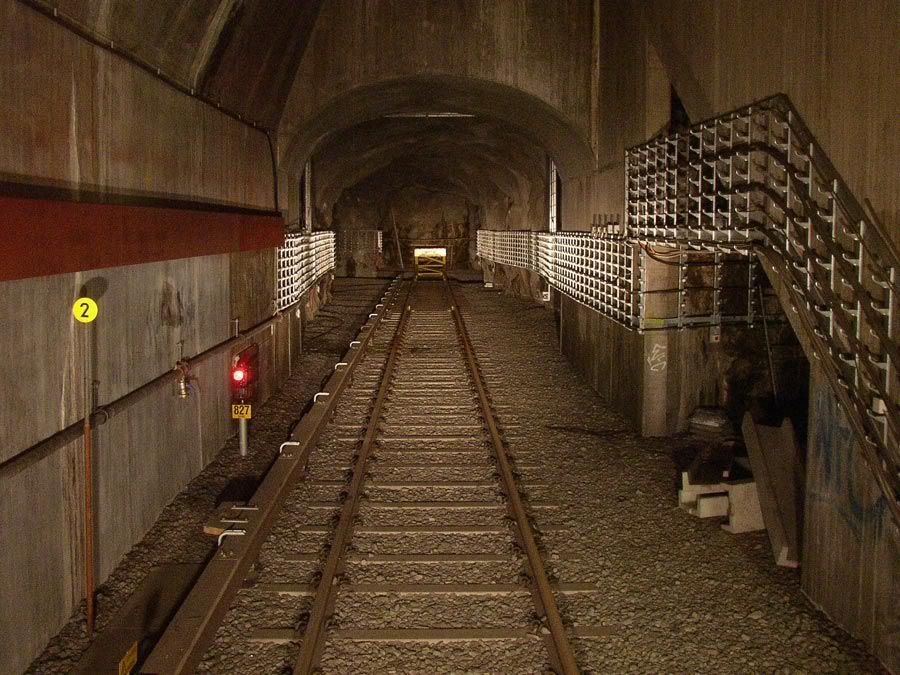
Even this is a main signal, although a small one. It shows the end ("slutpunkt") of a train route, e.g. when driving on the wrong track.
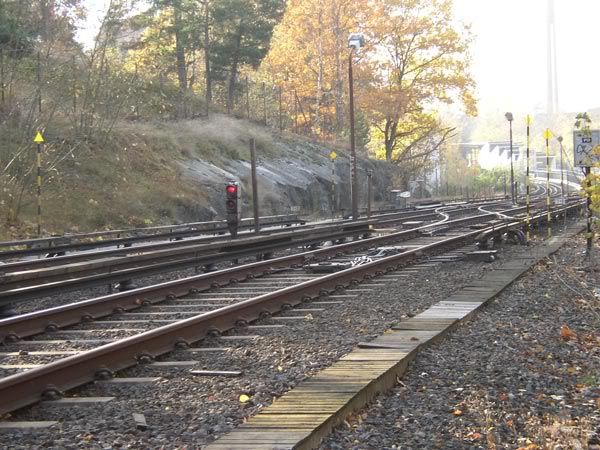
When arriving to a diverging switchpoint from the wrong track (at the red and blue lines), the signal can also show the "stop and proceed" aspect when running onto the "right" track (which is, of course, the track to the left!)










